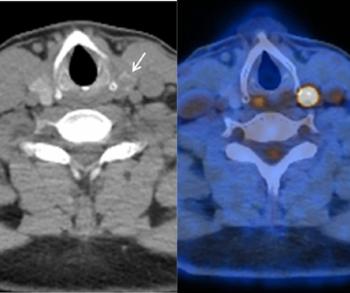
GE adds new coding to ultrasound system
Integration of magnet and components in progressGE Medical has upgraded its Logiq 700 ultrasound system with a new coding system invented to boost the intensity of deep body signals.GE started shipping upgrades of what it has named "digitally
Integration of magnet and components in progress
GE Medical has upgraded its Logiq 700 ultrasound system with a new coding system invented to boost the intensity of deep body signals.
GE started shipping upgrades of what it has named "digitally encoded ultrasound" technology to its installed base at the end of May. Jeff Peiffer, manager of America's ultrasound marketing for GE, said his company has patented the coding for the ultrasound system. The Logiq 700 was introduced in the spring of 1999.
The new coding expands B-Flow imaging to more transducers. GE's B-Flow allows clinicians to image blood vessel walls and blood flow. With the new coding, B-Flow can now show difficult-to-image parts of the anatomy because of the coding's ability to transmit signals with specially designed codes, said Peiffer. For example, a fetal umbilical cord and heart may be imaged with B-Flow using GE's new coding, Boesen said.
"We are able to boost weak signals and suppress unwanted noise," said Pete Boesen, GE Medical marketing manager for radiology ultrasound.
Boesen and Peiffer noted that medical imaging companies started using B-Flow a year ago for blood imaging. Now the technique can be used with seven probes available for GE's Logiq 700.
GE's package also comes with new transducers and three other enhancements: virtual convex imaging, which extends the linear and sector transducers' fields of view while maintaining fine detail resolution; Logiq View, which captures an expanded length of anatomy in each view in gray-scale, color Doppler, and power Doppler imaging modes; and pulsatile flow detection, a method that streamlines blood vessel exams by differentiating pulsatile from nonpulsatile flow.
GE showcased Logic View as a work-in-progress at the RSNA meeting last year (SCAN 1/12/00).
Newsletter
Stay at the forefront of radiology with the Diagnostic Imaging newsletter, delivering the latest news, clinical insights, and imaging advancements for today’s radiologists.




























